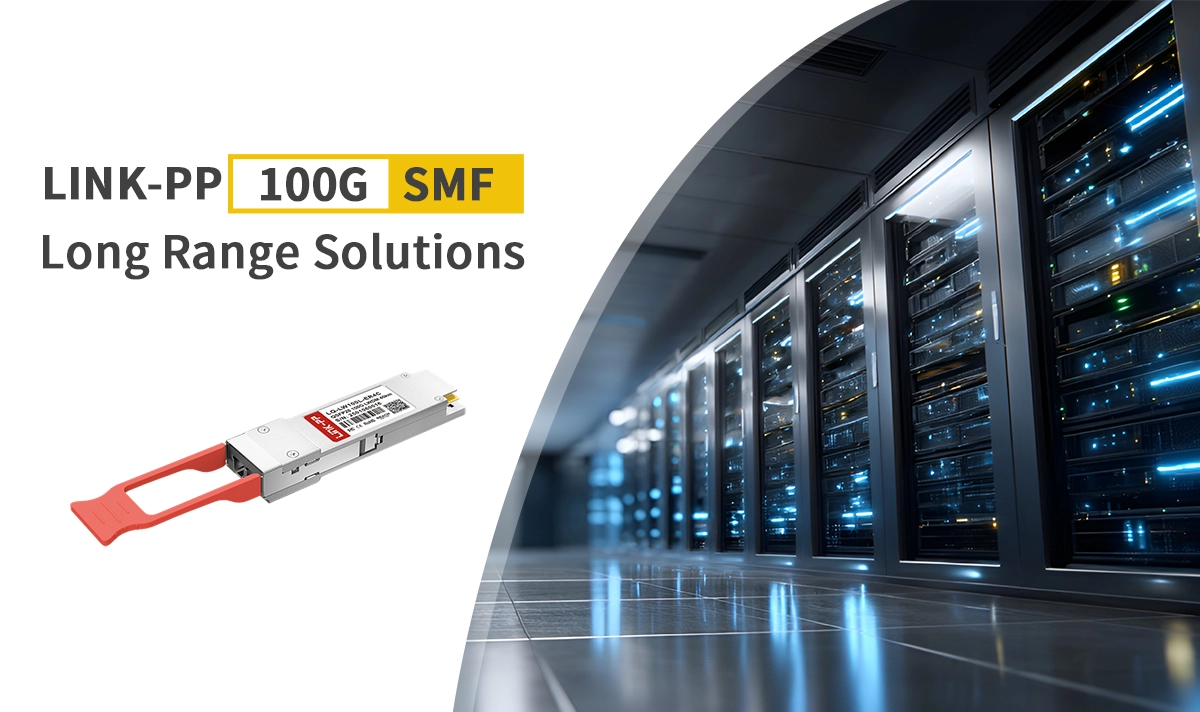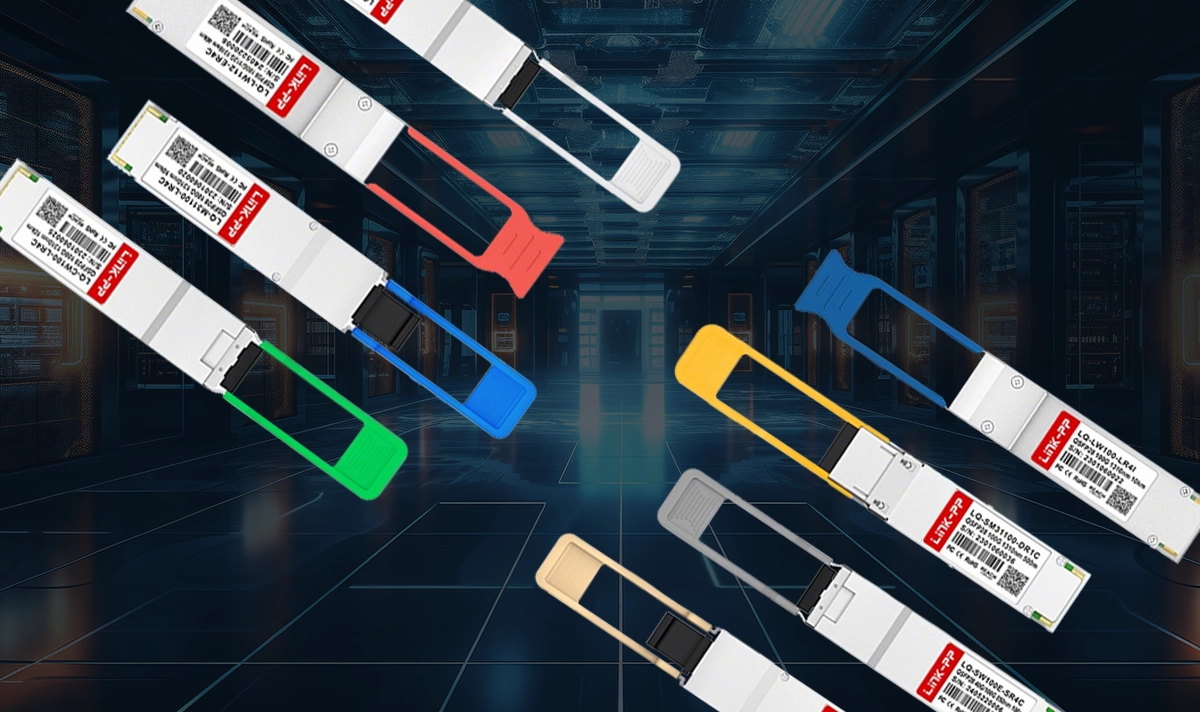
Struggling to connect data centers or campus buildings over kilometers? The 100G QSFP28 Single Mode Fiber (SMF) module is your essential high-speed, long-distance champion. This compact powerhouse solves critical connectivity challenges, enabling robust 100Gbps data transfer far beyond the reach of multimode optics. Let's dive into why it's indispensable for modern networks.
✅ Why Choose 100G Single Mode QSFP28 Modules?
Modern networking demands speed and reach. While multimode solutions suffice for short links, single mode fiber optics are the undisputed choice for distances exceeding 100 meters, often reaching 80km, 40km, 10km, or 2km. Here's why 100G SMF QSFP28 modules are vital:
🌟 Extended Reach: Conquer distances from 2 kilometers up to 100 kilometers and beyond, seamlessly connecting buildings, campuses, or metro locations. Perfect for Data Center Interconnect (DCI) and metro networking.
⚡ High Performance: Deliver consistent, reliable 100Gbps bandwidth (4x25Gbps lanes) using advanced modulation like 4WDM or PAM4 for longer reaches, meeting the demands of high-performance computing (HPC) and cloud infrastructure.
📶 Superior Signal Integrity: SMF's smaller core minimizes modal dispersion, ensuring clearer signals over vast distances compared to multimode fiber (MMF). This translates to lower bit error rates (BER).
💡 Future-Proofing: Investing in SMF infrastructure provides a clear path for future upgrades to 200G, 400G, and even 800G speeds using the same fiber plant.
🔋 Efficiency: Modern modules offer excellent performance per watt, crucial for dense deployments and reducing Total Cost of Ownership (TCO).
✅ 100G Single Mode QSFP28 Module Types Explained
Not all 100G SMF QSFP28s are the same. The key variations depend on the transmission technology and target distance:
📡 100GBASE-LR4 / 100G LR4 QSFP28 Transceiver:
Standard: IEEE 802.3ba
Wavelengths: 4 lanes using LWDM wavelengths (around 1295nm, 1300nm, 1304nm, 1309nm).
Reach: Up to 10km on OS2 single mode fiber.
Key Use Case: Standard workhorse for intra-campus and data center interconnect links up to 10km.
LINK-PP Model: LQ-LW100-LR4C
📡 100GBASE-ER4 / 100G ER4 QSFP28 Module:
Standard: IEEE 802.3ba (Extended Reach)
Wavelengths: 4 lanes using LAN-WDM wavelengths.
Reach: Up to 40km on OS2 SMF.
Key Use Case: Longer distance DCI and metro rings.
LINK-PP Model: LQ-LW100-ER4C
📶 100G ZR4 QSFP28 (Often Coherent):
Standard: Often based on OIF Implementation Agreements or proprietary.
Technology: Typically uses coherent optics and advanced modulation (e.g., DP-QPSK).
Reach: Up to 80km or even 100km+ on OS2 SMF.
Key Use Case: Long-haul DCI, service provider networks. (Note: Often consumes more power than LR4/ER4).
LINK-PP Model: LQ-LW100-ZR4C
📶 100G DR/FR/LR (PAM4 Based - e.g., 100G-FR1/100G-LR1):
Standard: IEEE 802.3cu (100G over Single Lambda)
Technology: Uses PAM4 modulation to send 100Gbps over a single wavelength/laser.
Reach: DR (500m) typically uses MMF, FR (2km) and LR (10km) use SMF.
Key Use Case: Provides a simpler, potentially more cost-effective solution for specific reach points (2km, 10km) using only one or two fibers (BiDi variants exist).
LINK-PP Model: LQ-SM31100-DR1C
Key Specifications & Performance Metrics
Feature | Typical Value/Range | Importance |
|---|---|---|
Data Rate | 100 Gbps (4x25G NRZ or 1x/2x PAM4) | Core function - high-speed connectivity. |
Reach | 2km, 10km, 40km, 80km | Defines application scope (DCI, Metro, Campus). |
Fiber Type | OS2 Single Mode Fiber | Essential for achieving specified distances. |
Wavelength | CWDM, LAN-WDM, Specific Lambda (PAM4) | Compatibility with optics and filters. |
Connector | Duplex LC | Standard interface for SMF patch panels. |
Power Consumption | ~3.5W - 6W+ | Impacts density, cooling, operating costs (TCO). |
DDM/DOM | Yes | Digital Diagnostics Monitoring crucial for proactive maintenance. |
✅ Why Choose LINK-PP for Your 100G Single Mode QSFP28 Needs?

When deploying mission-critical 100G optics, reliability, performance, and compatibility are non-negotiable. LINK-PP delivers premium 100G QSFP28 transceivers engineered for excellence:
✅ Rigorous Compatibility Testing: Guaranteed interoperability with major OEM switches and routers (Cisco, Juniper, Arista, NVIDIA, etc.), preventing costly network compatibility issues.
✅ Uncompromising Quality: Manufactured to the highest standards, ensuring low bit error rates (BER) and long-term stability for your high-speed network infrastructure.
✅ Full DDM/DOM Support: Real-time monitoring of temperature, voltage, Tx/Rx power for proactive network management and simplified troubleshooting.
✅ Cost-Effective Solution: Delivering enterprise-grade performance without the premium price tag of branded optics, significantly lowering your optical networking costs.
Explore our high-performance LINK-PP 100G Single Mode QSFP28 Modules:
LQ-LW100-LR4C: Ideal standard 10km reach solution. Perfect for data center interconnects and campus backbones.
LQ-LW100-ER4C: Tackle longer distances up to 40km for metro Ethernet applications.
LQ-LW100-ZR4C: Conquer demanding 80km+ long-haul DCI links (coherent technology).
LQ-SM31100-DR1C: Efficient PAM4-based 2km/10km options simplifying fiber use.
🚀 Ready to Future-Proof Your Network with Reliable 100G?
Don't let distance limit your bandwidth. LINK-PP's high-quality, compatible 100G Single Mode QSFP28 modules provide the robust, long-reach connectivity your evolving network demands. Ensure seamless scalability and peak performance.
👉 Browse our full range of 100G QSFP28 modules and request a quote today! Source now ➞
✅ FAQ
What is the main difference between LR4 and ER4 modules?
LR4 modules work for up to 10 kilometers. ER4 modules can reach 40 kilometers. ER4 modules use more power. They often need help for long fiber runs.
Can engineers mix different QSFP28 module types in one network?
Engineers can use different module types together. The modules must follow the same standards. Always check if devices and fiber match before you set them up.
Why do some modules use MPO connectors instead of LC duplex?
MPO connectors let data move over many fibers at once. This helps with lots of cables and fast data in short spaces, like big server racks.
How does PAM4 modulation improve data transmission?
PAM4 modulation lets more data move on each wavelength. This means faster speeds without adding more fiber. It is good for new high-speed networks.




